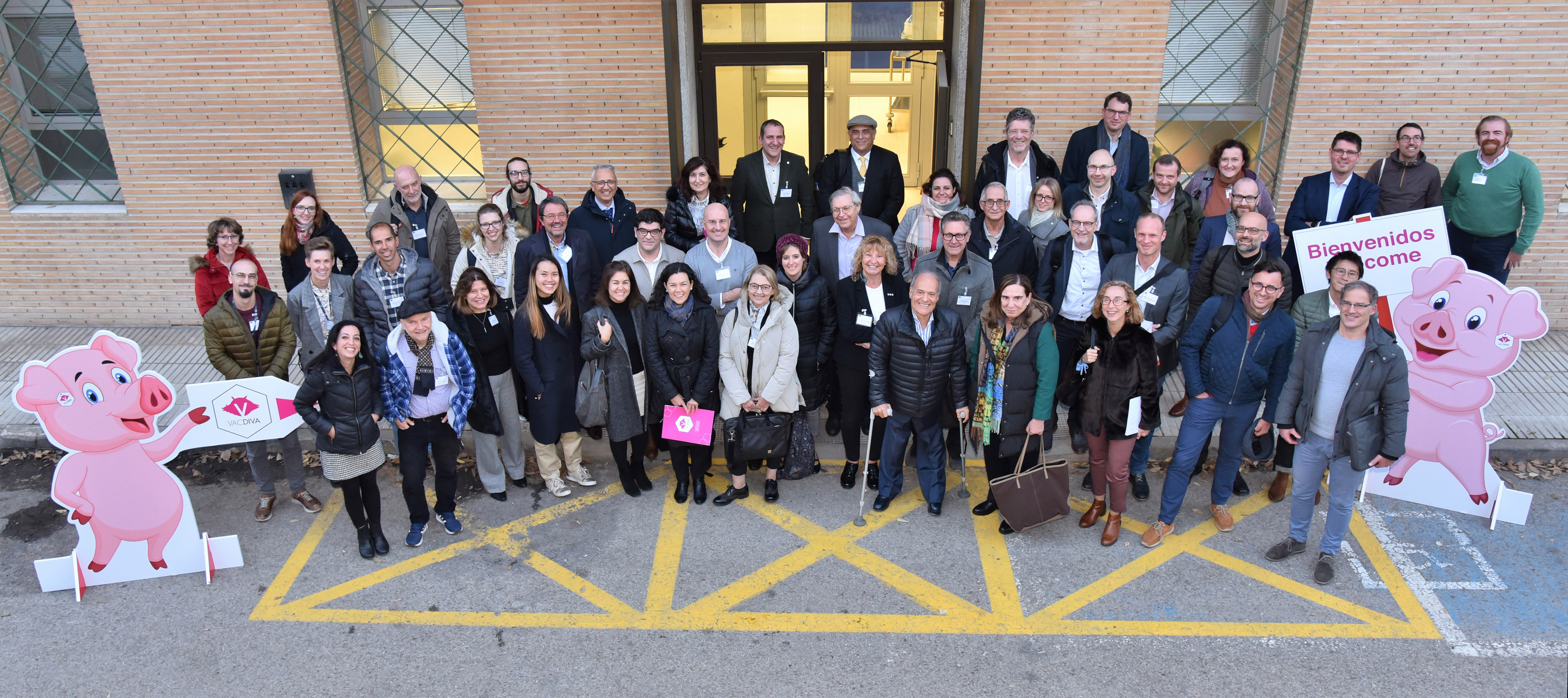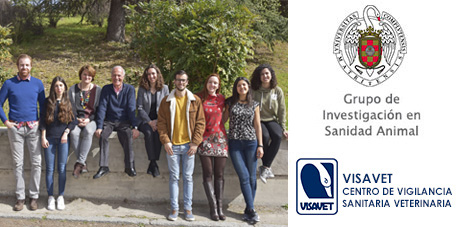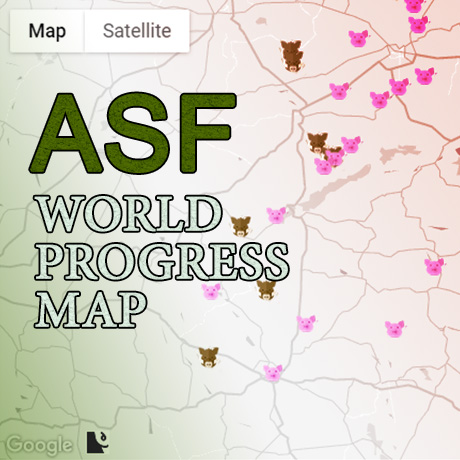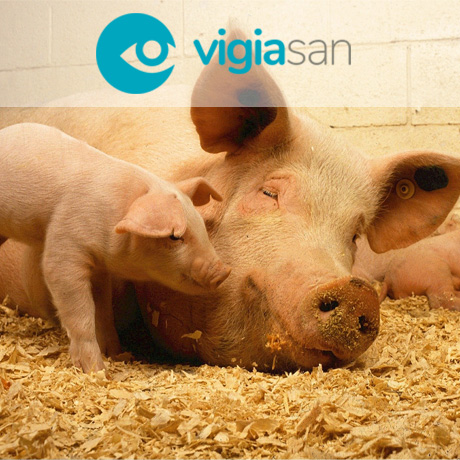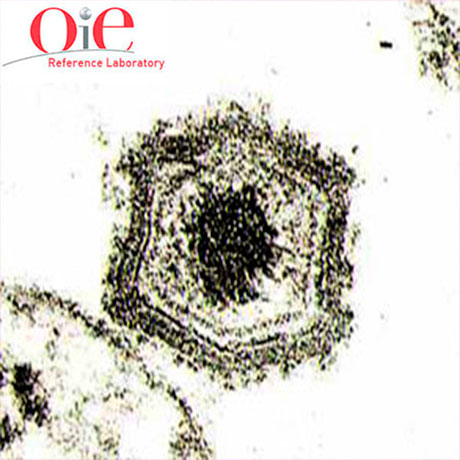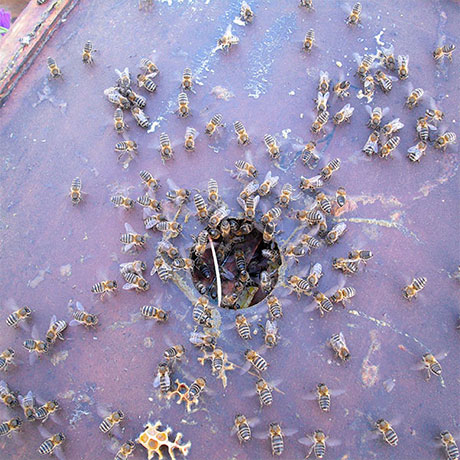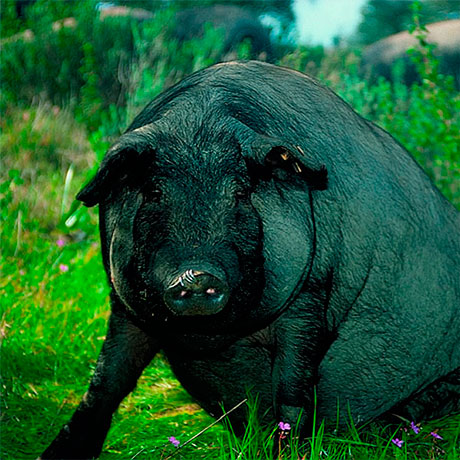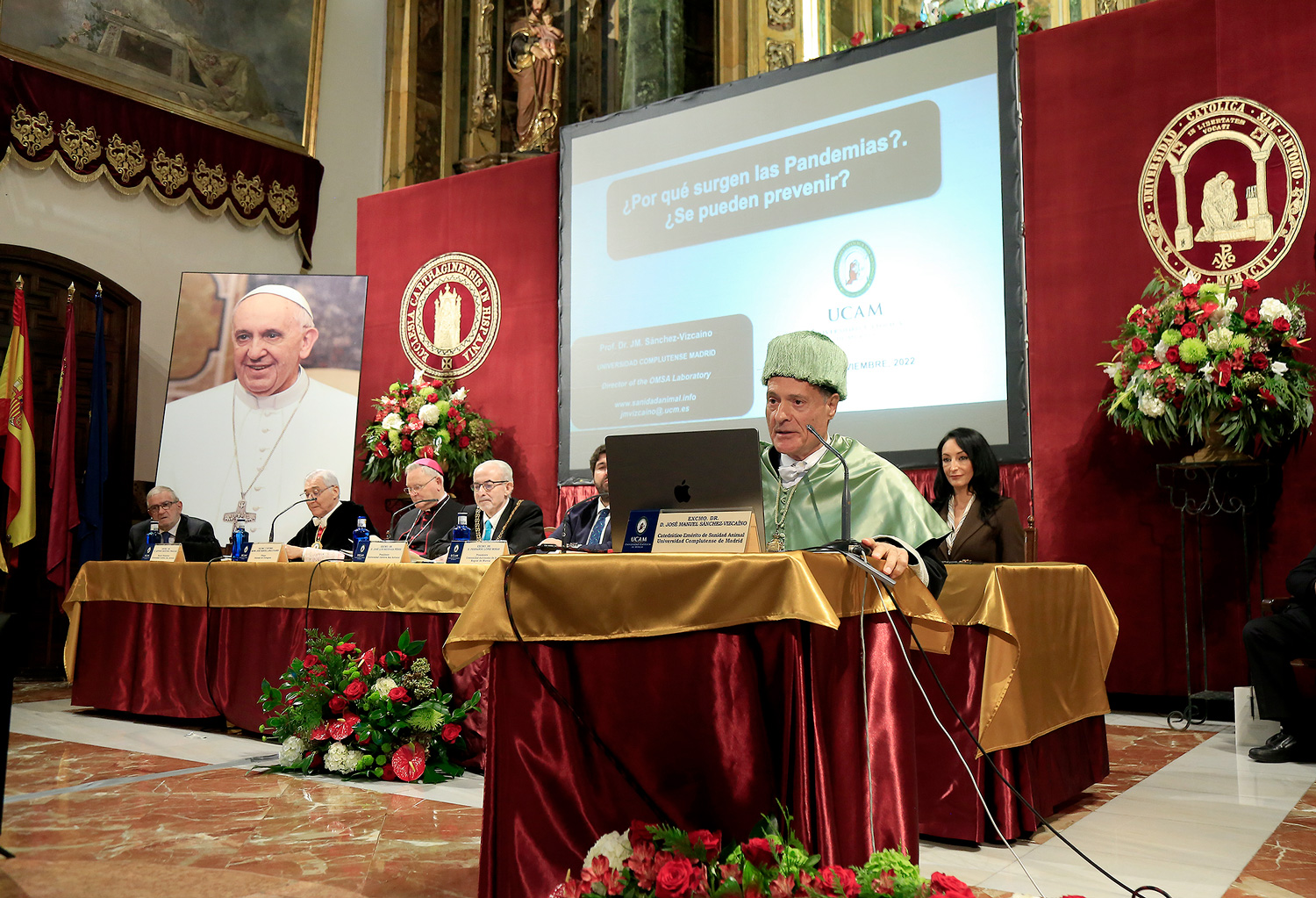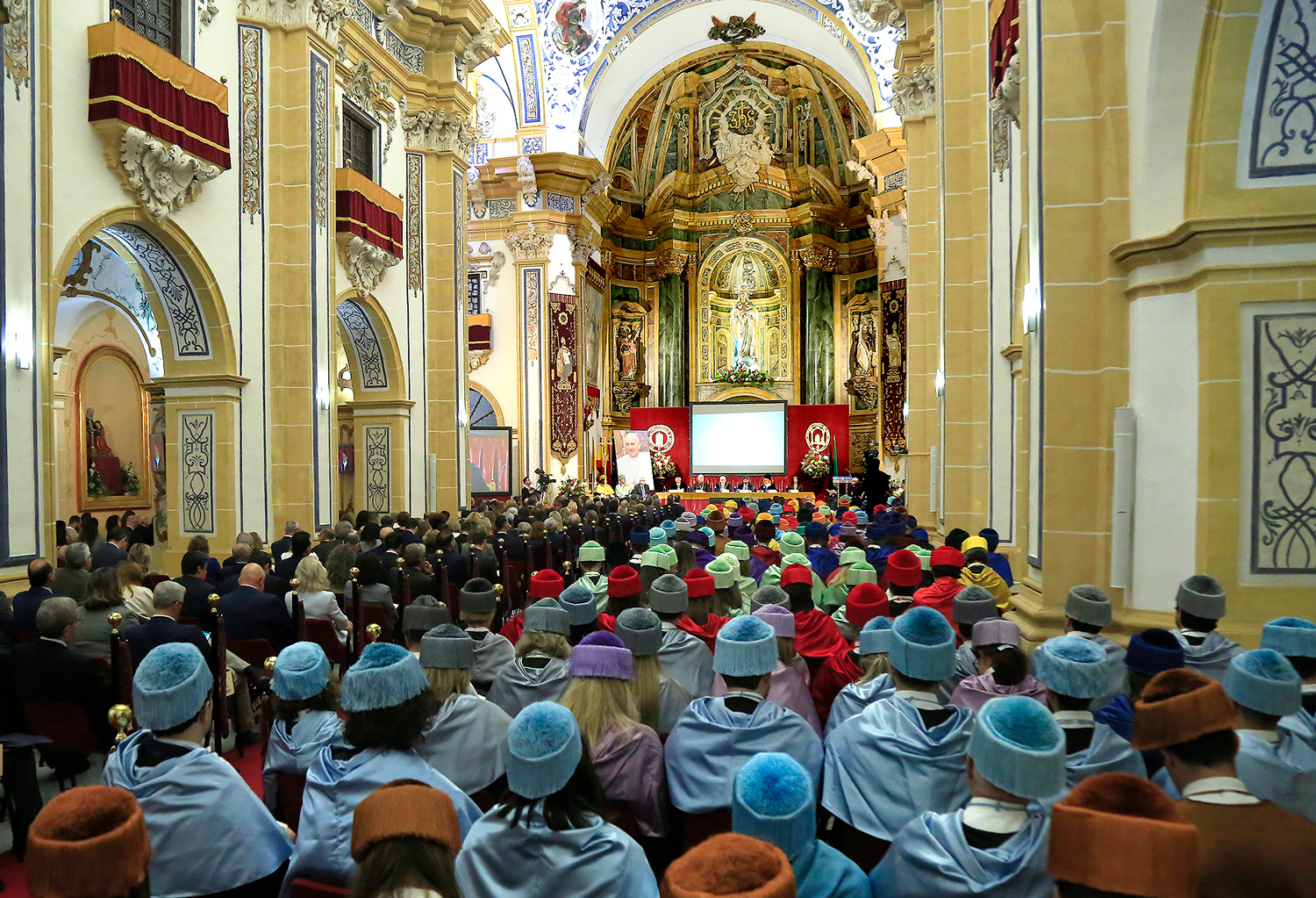Evaluación cualitativa del riesgo de entrada del virus de la Lengua Azul en Canarias
Nuevo artículo enviado a la revista Animals.
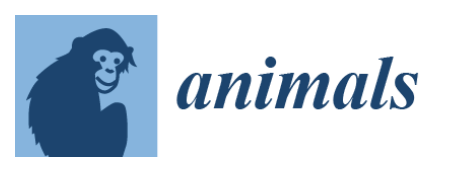 Resumen: Bluetongue is a viral ruminant disease transmitted by Culicoides spp. biting midges. In the last decades, it increased its expansion and became endemic in areas where it used to be sporadic ie south of Spain, France or Morocco. However, in spite of its widely dissemination, the virus has not ever been reported in the Canary Islands. The disease could cause severe consequences, that is why the interest of assessing the risk of entry of Bluetongue virus into the Canary Islands. An entry qualitative evaluation was performed following the World Organization of Animal Health guidelines. Firstly, risk pathways were identified from literature review; the risk factors related to the level of risk by pathway were selected and combined to get a risk score for every movement, finally, the risk score per movement were analysed to get the temporal and spatial risk of entry. The windborne route was assessed through the trajectory and deposition Hybrid Single Particle Lagrangian Integrated Trajectory Model. The results indicated that the more relevant vía is infected cattle although the risk is very low; and that BTV8 risk slightly outstand BTV 1 and 4. In addition, the risk is principally concentrated in some areas at the North and East of Gran Canaria and Tenerife Island. Other potential routes of entry were vector coming with ungulates or on wind streams however those resulted to be unlikely routes. This work could be useful to focus surveillance measures for cost-effective early detection and prevention programmes.
Resumen: Bluetongue is a viral ruminant disease transmitted by Culicoides spp. biting midges. In the last decades, it increased its expansion and became endemic in areas where it used to be sporadic ie south of Spain, France or Morocco. However, in spite of its widely dissemination, the virus has not ever been reported in the Canary Islands. The disease could cause severe consequences, that is why the interest of assessing the risk of entry of Bluetongue virus into the Canary Islands. An entry qualitative evaluation was performed following the World Organization of Animal Health guidelines. Firstly, risk pathways were identified from literature review; the risk factors related to the level of risk by pathway were selected and combined to get a risk score for every movement, finally, the risk score per movement were analysed to get the temporal and spatial risk of entry. The windborne route was assessed through the trajectory and deposition Hybrid Single Particle Lagrangian Integrated Trajectory Model. The results indicated that the more relevant vía is infected cattle although the risk is very low; and that BTV8 risk slightly outstand BTV 1 and 4. In addition, the risk is principally concentrated in some areas at the North and East of Gran Canaria and Tenerife Island. Other potential routes of entry were vector coming with ungulates or on wind streams however those resulted to be unlikely routes. This work could be useful to focus surveillance measures for cost-effective early detection and prevention programmes.
Gutierrez I, Sanchez-Vizcaino JM, Aguilar-Vega C y Sanchez-Vizcaino F.
Una herramienta útil para el diagnóstico y control seguro: COVID-19 y Peste Porcina Africana

Nuevo artículo con acceso abierto publicado en la revista Plos One, titulado "A useful tool for the safe diagnosis and control of the two main pandemics of the XXI century: COVID-19 and African Swine Fever disease".
Resumen:
The COVID-19 pandemic and the disease triggered by the African Swine Fever virus are currently two of the main problems regarding public and animal health, respectively. Although vaccination seems to be the ideal tool for controlling these diseases, it has several limitations. Therefore, early detection of the pathogen is critical in order to apply preventive and control measures. Real-time PCR is the main technique used for the detection of both viruses, which requires previous processing of the infectious material. If the potentially infected sample is inactivated at the time of sampling, the diagnosis will be accelerated, impacting positively on the diagnosis and control of the disease. Here, we evaluated the inactivation and preservation properties of a new surfactant liquid for non-invasive and environmental sampling of both viruses. Our results demonstrated that the surfactant liquid effectively inactivates SARS-CoV-2 and African Swine Fever virus in only five minutes, and allows for the preservation of the genetic material for long periods even at high temperatures such as 37°C. Hence, this methodology is a safe and useful tool for recovering SARS-CoV-2 and African Swine Fever virus RNA/DNA from different surfaces and skins, which has significant applied relevance in the surveillance of both diseases.
Barroso-Arevalo S, Diaz-Frutos M, Kosowska A, Perez-Sancho M, Domínguez L y Sanchez-Vizcaino JM.
Desarrollo de una estrategia eficaz de difusión de vacunas orales contra la peste porcina clásica para jabalíes en la prefectura de Gifu, Japón
 Publicamos un nuevo artículo en la revista Transboundary and Emerging Diseases.
Publicamos un nuevo artículo en la revista Transboundary and Emerging Diseases.
Resumen: In September 2018, classical swine fever (CSF) reemerged in Japan after more than a quarter of a century. After the first notification on a pig farm, wild boars positive for CSF were found continuously in the surrounding area. Gifu was the first prefecture in Japan to disseminate oral vaccines to wild boars in March 2019, with vaccines spread to approximately 14,000 sites between 2019 and 2020. While these diligent measures seemed to have shown some effectiveness, several vaccine spray sites remained without wild boar emergence. Based on the vaccine dissemination records from these periods, this study conducted a statistical analysis to propose more effective vaccine dissemination sites. First, a generalized linear mixed model was used to identify factors correlated with wild boar emergence. Then, two spatial interpolation methods, inverse distance weighted (IDW) and Kriging, were adopted to create a probability map of wild boar emergence for the entire Gifu Prefecture. The analysis showed a positive correlation between wild boar emergence and the appearance of raccoons, raccoon dogs, and crows as well as road density and wild boar distribution index. In particular, raccoon (OR: 1.83, 95%CI: 1.25–2.68, < 0.001), raccoon dog (OR: 1.81, 95%CI: 1.25–2.66, < 0.001), and medium level road density (OR: 1.56, 95%CI: 1.04–2.39, = 0.04) were strongly correlated with wild boar emergence. The spatial interpolation approach resulted in better prediction accuracy for the Kriging method than for IDW by the root mean square error, but both approaches identified a high wild boar appearance probability area in southeastern Gifu and a low appearance probability area in central Gifu. Here we have demonstrated a tool to effectively disperse oral vaccine to wildlife.
Ito S, Bosch J, Aguilar-Vega C, Isoda N, Martinez-Aviles M and Sanchez-Vizcaino JM.
Spatio-Temporal Epidemiology of the Spread of African Swine Fever in Wild Boar and the Role of Environmental Factors in South Korea
 Publicamos un nuevo artículo en la revista Viruses.
Publicamos un nuevo artículo en la revista Viruses.
Resumen: Since the first confirmation of African swine fever (ASF) in domestic pig farms in South Korea in September 2019, ASF continues to expand and most notifications have been reported in wild boar populations. In this study, we first performed a spatio-temporal cluster analysis to understand ASF spread in wild boar. Secondly, generalized linear logistic regression (GLLR) model analysis was performed to identify environmental factors contributing to cluster formation. In the meantime, the basic reproduction number (R0) for each cluster was estimated to understand the growth of the epidemic. The cluster analysis resulted in the detection of 17 spatio-temporal clusters. The GLLR model analysis identified factors influencing cluster formation and indicated the possibility of estimating ASF epidemic areas based on environmental conditions. In a scenario only considering direct transmission among wild boar, R0 ranged from 1.01 to 1.5 with an average of 1.10, while, in another scenario including indirect transmission via an infected carcass, R0 ranged from 1.03 to 4.38 with an average of 1.56. We identified factors influencing ASF expansion based on spatio-temporal clusters. The results obtained would be useful for selecting priority areas for ASF control and would greatly assist in identifying efficient vaccination areas in the future.
Ito S., Bosch J., Jeong H., Aguilar-Vega C., Park J., Martinez-Aviles M. y Sanchez-Vizcaino JM.
Vacdiva Policy Event
El proyecto EU H2020 VACDIVA organiza un Policy Event el próximo 29 de noviembre en Madrid.
Repasaremos la situación de riesgo global y los avances en el desarrollo de una vacuna segura, eficaz y DIVA.
